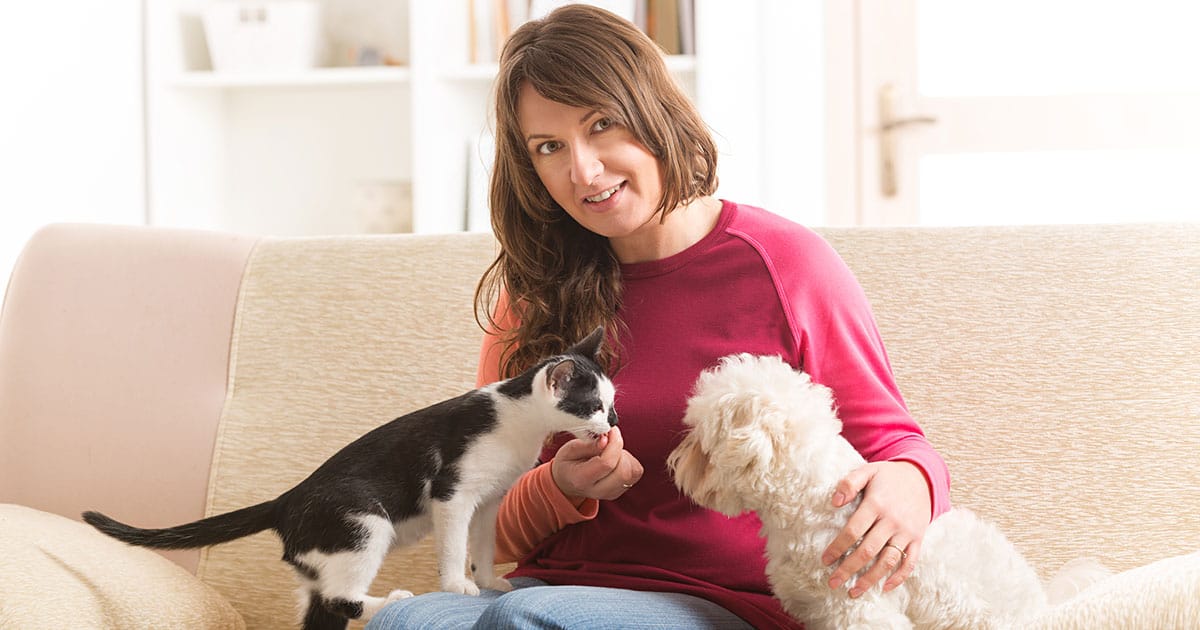
How to Introduce a New Pet to Your Home and Other Animals
Bringing a new pet into your home is an exciting experience, but it requires thoughtful planning to ensure a smooth transition. Proper introductions to your household and other animals are crucial for building harmony. This guide offers step-by-step tips to help your new pet adapt while minimizing stress for everyone involved.
🐶 Pet Star
12 min read · 26, Jan 2025

1. Preparing Your Home for the New Pet
Before bringing your new pet home, ensure the environment is safe and welcoming:
- Designate a Private Space: Create a separate area where the new pet can settle in without immediate interaction with other animals.
- Pet-Proof Your Home: Remove hazards such as toxic plants, loose wires, and small objects that could be swallowed.
- Gather Supplies: Have essentials ready, including food, water bowls, bedding, toys, and a litter box (if applicable).
2. Gradual Introductions: Key to Success
Introducing a new pet to your home and existing animals requires a gradual approach:
Step 1: Allow Adjustment to the New Environment
- Let your new pet explore their designated space and become familiar with their surroundings.
- Limit their exposure to the rest of the house initially.
Step 2: Scent Familiarization
- Exchange bedding or toys between your new pet and existing animals to help them get used to each other’s scent.
- Rub a soft cloth on one pet and place it near the other to encourage familiarity.
Step 3: Supervised Visual Introductions
- Use baby gates or crates to allow the pets to see each other without physical contact.
- Monitor their body language for signs of curiosity or aggression.
Step 4: Controlled Meetings
- Arrange short, supervised meetings in neutral territory.
- Keep interactions positive by offering treats and praise.
Step 5: Gradual Freedom
- Once they show signs of comfort around each other, allow them to interact without barriers under supervision.
- Avoid rushing the process; some pets take weeks to adjust.
3. Introducing Specific Types of Pets
Dogs and Dogs
- Introduce them on neutral ground, like a park, to prevent territorial behavior.
- Keep both dogs on a leash and observe their interactions.
- Gradually increase their time together as they grow more comfortable.
Cats and Cats
- Keep the new cat in a separate room for a week or more.
- Use scent-swapping techniques and gradual exposure to reduce stress.
- Expect some hissing or growling initially; it’s a natural response.
Dogs and Cats
- Ensure the cat has access to safe spaces where the dog can’t reach.
- Train your dog to remain calm around the cat.
- Never leave them alone together until you’re confident they’re comfortable.
Small Pets (e.g., rabbits, guinea pigs) and Other Animals
- Keep small pets in secure enclosures.
- Allow other animals to observe them from a distance.
- Supervise all interactions to prevent harm.
4. Managing the Transition Period
Recognize Stress Signals
Watch for signs of stress, such as hiding, growling, or excessive grooming. Address these behaviors with patience and reassurance.
Maintain Routine
Consistency helps reduce anxiety. Stick to regular feeding, playtime, and bedtime schedules for all pets.
Avoid Favoritism
Give equal attention to your existing and new pets to prevent jealousy.
5. Building Positive Associations
Positive reinforcement is crucial for fostering good relationships:
- Use Treats and Praise: Reward calm and friendly behavior during interactions.
- Create Shared Activities: Engage in activities like group walks or playtime to build a bond between pets.
- Avoid Punishment: Negative reinforcement can increase fear and aggression.
6. Troubleshooting Common Issues
Aggression
- Separate the pets immediately and reintroduce them slowly.
- Consult a veterinarian or animal behaviorist for guidance.
Fear or Avoidance
- Give the fearful pet time to adjust and provide plenty of hiding spots.
- Avoid forcing interactions.
Resource Guarding
- Feed pets in separate areas to prevent conflicts over food.
- Provide multiple toys and beds to minimize competition.
7. When to Seek Professional Help
If your pets continue to show signs of aggression or stress despite your efforts, consult a veterinarian or a professional animal behaviorist. They can offer tailored strategies to improve the situation.
Q1: How long does it take for pets to adjust to each other?
Ans) The adjustment period varies depending on the animals’ temperaments and past experiences. It can take anywhere from a few days to several weeks or even months.
Q2: What should I do if my pets fight during introductions?
Ans) Separate them immediately and give them time to calm down. Resume the introduction process gradually and under supervision.
Q3: Can I introduce a new pet without separating them initially?
Ans) It’s not recommended. Separating them initially helps reduce stress and allows for controlled introductions.
Q4: How can I tell if my pets are getting along?
Ans) Signs of a positive relationship include relaxed body language, playing together, and sharing spaces without tension.
Q5: Is it harder to introduce an older pet to a new one?
Ans) Older pets may take longer to adjust, especially if they’ve been the sole pet for years. Patience and gradual introductions are key to success.
Similar Articles
Find more relatable content in similar Articles
Explore Other Categories
© 2024 Copyrights by rPets. All Rights Reserved.